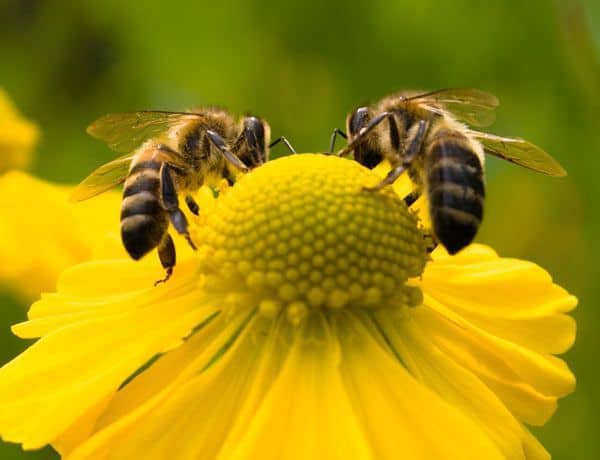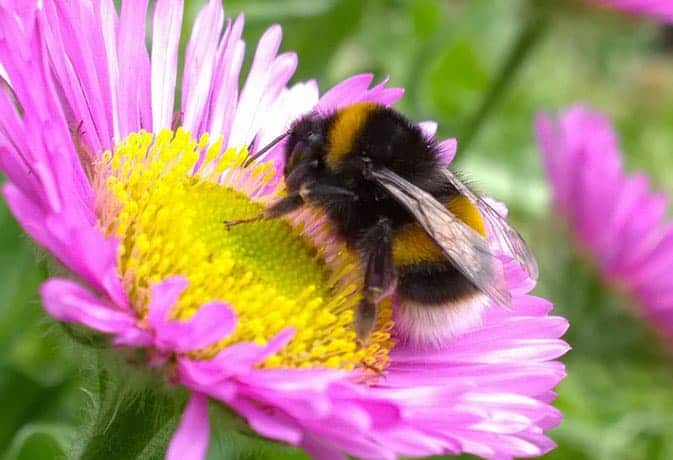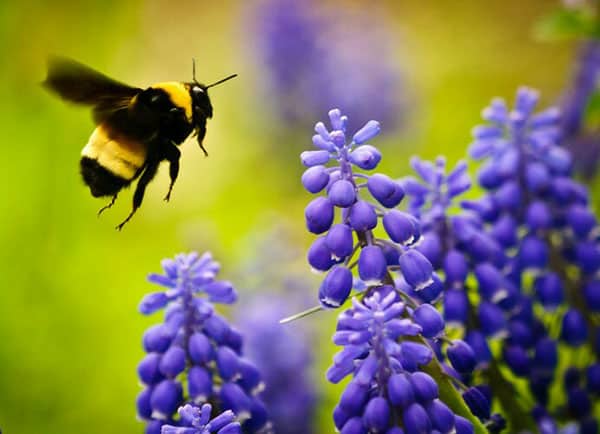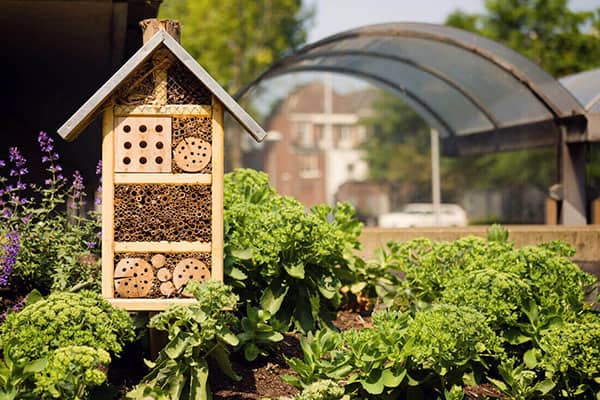There are many benefits that bees have on the environment. If you learn more about those benefits, you’ll appreciate why it’s important to have bees and promote their survival.
While bees are not the only insects that act as pollinators, they’re extremely important. Without bees, some plants wouldn’t reproduce, especially those that are major sources of food for animals and humans.

There are thousands of bee species known today. They’re the reason why some plants thrive, including legumes, grains, vegetables, nuts, and berries. About 1/3rd of crops that humans consume reproduce as a result of pollination assisted by bees.
Today, bees are under threat of extinction. Their numbers have been declining in worrying numbers across the globe. Parasites like Varroa Destructo and insecticides like neonicotinoids are some of the key threats to the life and population of bees.
However, the main threat to bees is reduced botanical diversity resulting from suburbanization and monocultural farming methods. Luckily enough, home gardening can assist to reverse this problem.
Among the bee species known today, honeybees are the most important species to man. They receive more attention than other bee species.
However, the decline in their population is extremely worrying. Scientists have been studying their decline and advising on possible measures to protect them and increase their population.
Honeybees are just but one bee species. There are other species that are under more threat than honeybees. For instance, bumblebees have suffered one of the severest declines in terms of population.
Since bumblebees have a different anatomy than other species, they’re able to pollinate some plant species that honeybees cannot. Thus, it’s necessary to consider bumblebees when landscaping your garden in Sydney to make it bee-friendly.

Welcoming bees to your landscape will benefit your garden and the environment. Like other animals, bees also need water, food, and shelter. By having these essential items in your garden, bees will surely come.
A garden can flourish with bees. The bees will also thrive and spread seeds to other places for a better environment.
Here’s how to create a bee-friendly landscape:
Grow Plants Loved By Bees
Basically, bees love feeding on pollen and nectar. That’s why they’re attracted to flowering plants as they produce pollen and nectar.
If you want to attract bees to your garden all year round, then you should grow flowering plants that develop flowers during different seasons.
While there are many flowering plants to choose from, the best options are those that thrive in your area. You can rely on the following tips when choosing bee-friendly plants for your garden:
- Plant several native species like sage, goldenrod, and clover to attract both solitary bees and bumblebees.
- Include plant species of the Old World such as lilac and lavender to work as an attraction to honeybees.
- While bees visit all types of flower colors, they tend to prefer blue, purple, and yellow flowers more than other colors.
- Bees find it challenging to extract pollen from triple or double blooms with layered petals. Thus, when choosing flowers, go for those that have petals growing in one row and those with an attractive fragrance.
- Include some tubular flowers that feature wide openings. They’ll attract bumblebees more than honeybees. Bumblebees are better than honeybees in pollinating. Also, bumblebees prefer larger flowers.
- Plant flowers of similar species closely together to maximize on the amount of available pollen in one area. Doing so will also make it easier for bees to find enough pollen.

Avoid Using Pesticides and Provide Water
Bees require water to thrive. One of the simplest ways of providing bees with water is by building a simple birdbath in your garden.
Ensure it’s always full of water. Place wood on the water in such a way that if floats to provide the bees with a place to land.
You can also provide bees with water by installing small sprinklers in specific locations. Set the sprinkler timer to spray water several times throughout the day. That way, bees will come to the water when the sprinklers start spraying.
In case you want to avoid over watering the plants, then place a few drip emitters in your garden and leave them to create pools of water on the soil for bees.
Since pesticides have caused a major drop in the population of bees, then you shouldn’t use them on your plants. Instead, use organic soil. Also, consider plants that resist pests and diseases. That way, plants will thrive without pesticides.
You can also combat pest infestations with alternative remedies that are free of pesticides. You can try alternative remedies like essential oils/soap and water or vinegar.
If you have to use pesticides, then only use them on the plants that require them rather than spraying the whole garden. That way, bees will still have uncontaminated pollen and nectar to feed on.
Create a Shelter for Bees
While a neatly manicured garden looks attractive, it won’t be as impressive to bees. Bees need some form of wild nature for shelter.
For instance, some bee species that aren’t social like honeybees prefer making nests under the ground, under the mulch, or within plant stems. Thus, a bare ground wouldn’t be the best place for bees to make their nests.

It can help to create one or several bee dwellings out of wood where social bees can congregate, live, and breed. A simple way of creating a house for bees is to look for a large tree trunk or stump and drill holes in it.
Then suspend the trunk in a shaded area. Although bees prefer gardens with sufficient sunlight, they make nests in shaded areas. Also, honeybees prefer dwellings with multiple rooms.
Placing twigs in a pile at a corner of your garden can work as a shelter for bees. You can also use unpainted or weathered pieces of wood to work as bee shelters.
Besides, decorating your garden with logs and placing them near untrimmed trees will work as a great habitat for different bee species while still adding charm.
When bees get a good spot for placing their nests, they wouldn’t go looking for shelter on the roof of your home. However, you can stay safe by filling gaps and holes on the walls with caulk to prevent bees from finding their way in.
Hire NBG Landscaping Services in Sydney
If you are looking for a reliable Sydney landscaping company, contact NBG Landscapes today! Our landscape team has over 10 years of experience working with clients all across Sydney, NSW. We provide complete landscape solutions. Give us a call for a free consultation. Visit our homepage to know more about our work.
Also read: Landscaping Ideas for Attracting Birds to your Backyard
